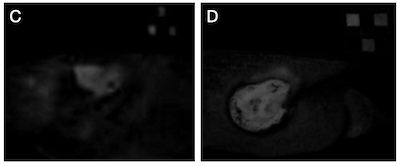Granulation Red Index To Assess Pressure Ulcer Granulation Tissue Quality Treated By Honey Gauze Dressing By Digital Image Analysis
DOI:
https://doi.org/10.14228/jpr.v6i2.284Keywords:
Granulation; honey; GRI; %GRI80; digital image analyses; DESIGN-?R toolAbstract
Background : Good formation of granulation tissue in the ulcer bed is regarded as one of the indicators of pressure ulcer healing. Granulation red index (GRI) had been published as an objective parameter to assess the quality of granulation tissue. Honey stimulates granulation of tissue and creates a moist healing environment. However, the assessment of granulation tissue quality of pressure ulcers treated by honey has yet to be proven in clinical settings. In this study, we evaluate the granulation tissue quality of pressure ulcers treated by honey using granulation red index by digital image analyses.
Method: There were 12 subjects who fulfill inclusion criteria treated by honey gauze dressing and were evaluated every week for three times measurements of %GRI and DESIGN-?score. Parameters of this study were the delta %GRI80 and DESIGN-?R score. Correlations were evaluated by Spearman’s correlation coefficient.
Result : The correlation of delta GRI80% and DESIGN-?R score was statistically significant from baseline measurement to first week of treatment and to second week of treatment (r1=0.65, p1=0.02 and r3=0.832, p2=0.001). The correlation of delta GRI80% and DESIGN-?R score from first to second week therapy was not statistically significant (r=0.23, p=0.47), but the GRI80% from first week therapy to second week of therapy was increasing and DESIGN R score was decreasing.
Conclusion:This study shows the correlation of %GRI80 and DESIGN-?R score of pressure ulcer after the treatment of honey gauze dressing. This study hopefully assists further study for wound bed preparation assessment and treatment of pressure ulcer for surgical intervention.
References
2. Black J, McNichol L, Zulkowski K, et al. National Pressure Ulcer Advisory Panel and European Pressure Ulcer Advisory Panel. Pressure Ulcer Treatment: Technical Report. Washington DC: National Pressure Ulcer Advisory Panel; 2009. Available at www.npuap.org.
3. Bergstrom N, Horn SD, Smout R J, et al. The National Pressure Ulcer Long-?Term Care Study: Outcomes of Pressure Ulcer Treatments in Long-?Term Care. J Am Geriatr Soc. 2005;53: 1721-? 1729.
4. Broughton G 2nd, Janis JE, Attinger CE. The basic science of wound healing. Plast Reconstr Surg 2006; 117 (Suppl. 7): 12S– 34S.
5. Baum CL, Arpey CJ. Normal cutaneous wound healing: clinical correlation with cellular and molecular events. Dermatol Surg 2005; 31: 674–86.
6. Iizaka S, Sanada H, Minematsu T, Oba M, Nakagami G, Koyanagi H, Nagase T, Konya C, Sugama J. Do nutritional markers in wound fluid reflect pressure ulcer status? Wound Rep Regen. 2010; 18: 31–7.
7. Matsui,Y., Furue, M., Sanada, H, et al. Development of the DESIGN-?R with an observational study: An absolute evaluation tool for monitoring pressure ulcer wound healing. Wound Rep Regen. 2011 (19): 309-?315.
8. Lizaka, S., Sugama, J., Nakagami, G., et al. Concurrent validation and reliability of digital image analysis of granulation tissue colour for clinical pressure ulcers. Wound Repair Regen 2011; 19: 4, 455–463.
9. Lizaka, S., Kaitani,T., Sugama, J., et al. Predictive validity of granulation tissue colour measured by digital image analysis for deep pressure ulcer healing: a multicenter prospective cohort study.Wound Repair Regen 2013; 21: 1, 25–34.
10. Sussman C, and Jensen BMB. Skin and Soft Tissue Anatomy and Wound Healing Physiology. In: Wound Care 4th edition. Lippincott Williams & Wilkins. Philadephia. 2012; 25.
11. Stremitzer S, Wild T, Hoelzenbein T. How precise is the evaluation of chronic wounds by health care professionals? Int Wound J 2007; 4: 156–61
12. Lizaka S, Koyanagi H, Sasaki S, Sekine R, Konya C, Sugama J, Sanada H. Nutrition-?related status and granulation tissue colour of pressure ulcers evaluated by digital image analysis in older patients. J Wound Care 2014;4: 198-?206.
13. Sanada, H., Iizaka, S., Matsui,Y., et al. Clinical wound assessment using DESIGN-?R total score can predict pressure ulcer healing: Pooled analysis from two multicenter cohort studies. Wound Repair Regen 2011; 19: 5,
14. Mukarramah DA, Sudjatmiko G. Perbandingan waktu penyiapan dasar luka antara penggunaan madu topical dengan convensional dressing pada luka trauma kronik. Jakarta. 2012.
15. Adifitrian T, Sudjatmiko G. Pengaruh Aplikasi Madu yang Ditutup Transparent Dressing Terhadap Waktu Epitelisasi pada Luka Donor Split Thickness Skin Graft. Jakarta. 2010
16. Sundoro A, Sudjatmiko G. Perbedaan Madu Manuka dengan Madu Lokal dari Segi Sifat Kimia dan Fisika serta Fungsi Antibakterial. Jakarta. 2010
17. Sudjatmiko G. Madu untuk Obat Luka Kronis. Yayasan Khasanah Kebajikan. Jakarta. 2011
18. Greer SE, Mustoe T. Pressure Ulcers. In: Handbook of Plastic Surgery. Marcel Dekker. 2006

Downloads
Published
Issue
Section
License

This work is licensed under a Creative Commons Attribution-NonCommercial-NoDerivatives 4.0 International License.
Authors retain the copyright of the article and grant Jurnal Plastik Rekonstruksi the right of first publication with the work simultaneously licensed under a Creative Commons Attribution License. Articles opting for open access will be immediately available and permanently free for everyone to read, download and share from the time of publication. All open access articles are published under the terms of the Creative Commons Attribution-Non-commercial-NoDerivatives (CC BY-NC-ND) which allows readers to disseminate and reuse the article, as well as share and reuse of the scientific material. It does not permit commercial exploitation or the creation of derivative works without specific permission.













